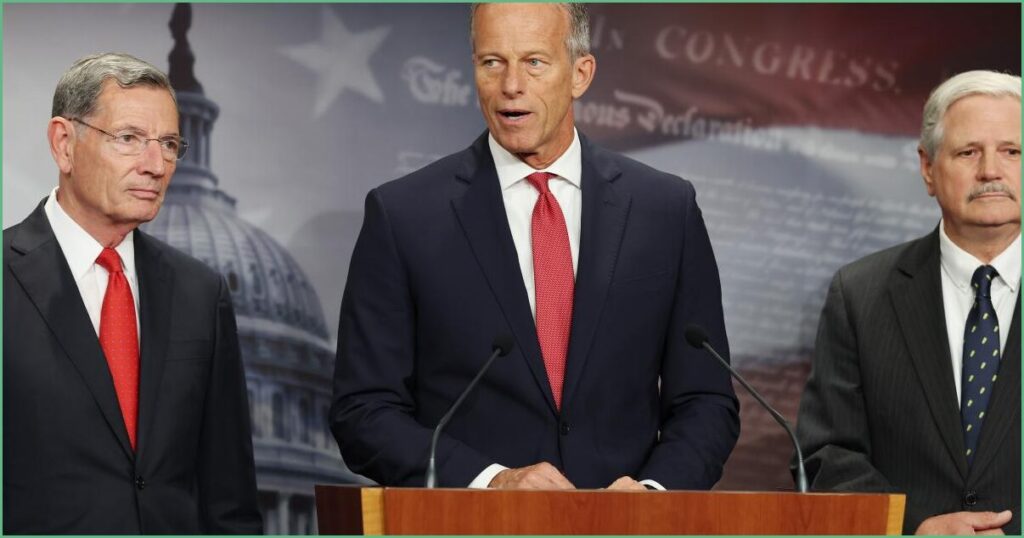Senate to vote again on spending bills to end government shutdown
The Senate is set to return to the floor to vote on two competing continuing resolutions as the government shutdown enters its third day. Both parties have put their stopgaps on the table, and neither side expects smooth sailing. The atmosphere is raw, partisan, and exactly where Washington’s dysfunction shows at its worst.
Republicans are insisting any short-term funding fix must include clear steps toward fiscal discipline and reform, arguing taxpayers cannot keep footing an open-ended bill for business as usual. Democrats have pushed back, wanting to extend subsidies tied to Obamacare and protect other priorities without concessions. That standoff is the core reason chambers remain stalled while federal work pauses.
On Wednesday Democrats blocked the Republicans’ stopgap funding bill for the third time, ABC News reported, and the upper chamber did not vote on Thursday as lawmakers observed Yom Kippur. That procedural back-and-forth is familiar to anyone who has watched Congress these last few years. What’s different now is a growing Republican argument that the status quo spending model must change or the nation will keep drifting toward fiscal crisis.
Two continuing resolutions are the immediate choice: the GOP’s version focused on limited spending and accountability, and the Democratic alternative aimed at preserving current social program funding. Neither bill is likely to win unanimous support across party lines, which means the next votes could simply reset the clock on negotiations. But votes are also messaging tools, and Republicans say their votes signal a commitment to restraint.
From a Republican perspective, the fight is less about shutdown theater and more about principle. Lawmakers on the right argue that continuing to fund bloated programs without scrutiny rewards waste and entrenches special interests. That message resonates with voters tired of one-party spending sprees and with conservatives who demand tangible limits on Washington’s appetite for more money.
Democrats counter that abrupt cuts or changes would harm millions who rely on federal programs, and they frame Republicans as willing to inflict pain to score political points. That framing is effective in headlines, but it glosses over the long-term costs of perpetual emergency funding and unaddressed entitlement growth. Republicans respond by saying sacrifices now prevent deeper pain later when national debt squeezes priorities like defense and veterans care.
What this showdown means
Practically, the shutdown halts many nonessential federal services and leaves federal employees in limbo, something both parties feel pressure to resolve quickly. Politically, this is a test of Republican resolve to stand firm on spending and a test of Democratic willingness to negotiate beyond soundbites. Expect each side to cast votes that let them claim the moral high ground to their base while blaming the other for any fallout.
Speaker Mike Johnson has been central to the GOP posture, using public firmness as a bargaining chip and telling members he has little to give on demands that would undo conservative priorities. The speaker’s tone has been clear in several public statements, and his message has tightened Republican ranks. As one prominent GOP voice put it, ‘I don’t have anything to negotiate:’ and that line has been repeated by allies who want a clear stance.
Another Republican theme is accountability: tie emergency funding to audits, program reviews, and temporary reforms so Congress does not simply rubber-stamp more spending. That approach is pitched as common-sense government, not punishment, and it offers a path to break the endless cycle of stopgap measures. Critics say audits won’t solve systemic issues fast enough, but Republicans argue fixing the habit of automatic funding is the first step.
Negotiations, if they happen in earnest, will revolve around timing, offsets, and political optics. Democrats will press to protect health subsidies and social programs, while Republicans will try to secure budget guardrails and rollback of wasteful spending. The fallback is another short-term patch, but that simply delays the inevitable reckoning over how Washington lives within its means.
Outside the Capitol, voters are watching and weighing which party looks responsible and which looks stubborn. For Republicans, the messaging goal is to show seriousness about fiscal health and to force a debate Democrats have long avoided. For Democrats, the goal is to frame any squeeze as harmful to vulnerable Americans and to keep the political heat on the GOP.
If the Senate’s votes fail to produce a compromise, both sides will likely dig in and trade blame while services remain disrupted. That outcome can escalate pressure on moderate senators who may be forced to pick a side for the first time. Those swing votes will be the ones to watch, because a small group could break the impasse if they pivot toward pragmatic fixes.
In the end, Republicans argue this shutdown moment is an opportunity to reset how Washington spends and to hold programs accountable. Democrats argue the risks of sudden change are too high and demand immediate protections for beneficiaries. The coming votes will not just decide short-term funding; they will reveal whether either party is willing to make hard choices or prefers blame politics over governance.
For readers tracking the drama, the next 48 to 72 hours are critical: votes, floor speeches, and backroom deals will define the immediate path. Whatever happens, the debate underscores a larger truth about American politics: without willingness to compromise on structure, not just dollars, the same fights will return. Conservatives will continue to press fiscal reform, and that pressure will shape future budget battles long after the current shutdown ends.
